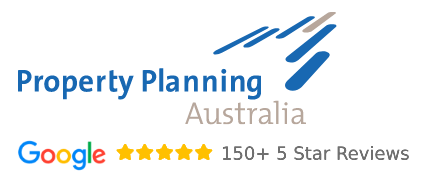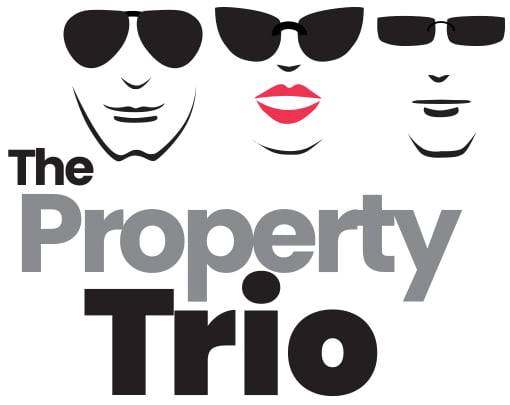Previously known as “The Property Planner, Buyer and Professor”
Got a question for the trio?Submit our online form!Episode Highlights
2.25 – Dave shares his first tip for the listeners about investment borrowing.4.50 – Cate circles the concept of 106% Loan to Value Ratio and quizzes Dave on how ‘normal’ this is for investment lending9.47 – Is there any reason to set up the investment loan limit for more than the full purchase price plus costs? The answer might surprise listeners15.02 – “The true cost of your interest rate after the tax deduction is cheaper than the cost of your interest on your home loan (as long as you’re above the tax free threshold with your earnings”. What does Dave mean by this?17.55 – Teaser for next week’s episode… Mike shares some rental gap data from his recent press release!20.45 – Dave shares three compelling examples of tricky scenarios which fall outside the general rule of paying Interest-Only on investment debt, and P&I on a home loan31.44 – Gold NuggetsShow notes
1. What’s the first tip that you have for our listeners about investment borrowing?
Tip number one, and this might be stating the obvious for some people, is that you should borrow as much of all the purchase costs associated with purchasing an investment property as you.IF- you haven’t paid off your home loan,
- still have non-deductible debt to pay off
- Or plan to borrow to purchase a home, holiday house or complete a home renovation or any other major non-deductible expense into future.
2. So would you say that people should try to borrow the full purchase price plus all purchase costs if they can for an investment purchase?
Generally speaking, yesIf you have equity in other property, ideally you borrow the full investment price plus costsOR as much of it as possible to optimise your tax deductions and keep your surplus savings for reducing the interest on the home loan.Also ideally borrow:- The deposit to ensure it is claimable – technically if you pay for it in cash you shouldn’t claim it the interest, even if you pay yourself back later on from the loan when it settle.
- And borrow the purchase costs – like stamp duty, transfer fees, solicitor fees, buyer’s agents fees
3. How can someone borrow the full purchase price plus all stamp duty, buyers agents and other associated purchasing costs EG 106% LVR?
You need have 26% of the value of the investment property available in equity, generally up to 80% of an existing property or across your property portfolio, and use the available equity in properties that you already own, to borrow against.Example- Eg: you bought a home for $1,000,000 and got a loan at 80%, and borrowed $800,000.
- Over time, you paid the loan down to $600,000 and the property grew in value to $1.2M.
- You can borrow again up to 80% of the $1.2M value – so the maximum amount you can borrow against the property is $960,000.
- Your existing loan is $600,000 – so $960,000 take $600,000 – you have $360,000 equity that you can access.
- Now, let’s say you plan to purchase an investment to the value of $800,000 purchase price
- To borrow 106% LVR you x $800,000 by 1.06 = $848,000 loan that you need to cover the purchase price plus costs.
- At 80% LVR, the loan that you can get against the investment of $800,000 is $640,000 – so that falls $208,000 short of the $848,000 loan that you need.
- But this $208,000 you can access from the $360,000 in equity you have in your home.
4. Being able to borrow the full purchase price plus costs is a big advantage. Is there any reason to set up the investment loan limit for more than the full purchase price plus costs and what are some of the logistics around managing the loan drawdown and settlement?
Yes, depending on how much equity you have available to use, you could set up the loan limit to be in excess of the total purchase costs.For example the loan could be set up to be $20k, $50k or more above what you need.You can then borrow additional funds from redraw to pay for your ongoing investment expenses that are deductible.Eg:- Property manager fees
- Maintenance costs
- Rates and water
- Depreciation schedule
5. What are some other benefits of using equity to fund an investment purchase?
The more equity you can use to borrow, means you use LESS of your own cash reserves which means that –- You have more savings reducing the interest on your home loan and paying off you home loan faster
- You have a bigger buffer and safety net of funds up your sleeve for a rainy day – all the way from your car breaks down to going down to one income for an extended period of time as you start a family.
- You maximise your tax deductions becuase after tax, the true cost of an investment loan is cheaper than a home loan
6. Should investment debt and non-deductible debt be kept separate and never the twain shall meet?
Yes, absolutely – do not mix deductible and non-deductible debt in the same loan account.We see this most commonly when people have a lot of redraw built up, perhaps in their home loan.They’ve worked hard to pay the balance down and they have $200,000 in redraw sitting in their home loan, which they then pull out to use on their investment purchase.Now you have a loan which is mixed for owner occupier and investment purposes, and will be a nightmare for your accountant when they go to do your tax return – as only a portion of the interest paid on that loan is deductible and a portion not.If you have 80% of the loan non-deductible and 20% deductible, each repayment you make 20% will be apportioned to reducing the deductible debt and this is –- Costing you tax deduction over the long run
- Slowing down how rapidly you pay off your home loan or non-deductible debt because not all the principal is going solely towards paying down your home loan.
7. What about the repayment strategy, how might a strategy for investment borrowing differ from home borrowing?
Listen to Ep 239 on Why you should pay off your home loan first, and Ep 181 on the mortgage and wealth creation strategies linked to your loan repayment strategy.- P&I v I/O –
- Pay p&I on home loan to pay off first
- Pay interest only on investment to optimize deductions.
- Offset accounts – Offset your home loan debt first, before you offset your investment debt.
- Fixed rates – as fixed rate loans rarely allow an offset account to be linked to them and when they do, it’s not 100% offset, some people might choose to go variable on their home loan debt (with offset account attached) and fix their investment loans (no offset)
8. Are there any tricky scenarios which might fall outside of that general rule of paying interest only on investment and P&I on your home loan?
Yes, we get a couple of scenarios that are a little bit out of the ordinary.And these can be incredibly complex to work through, such that even mortgage professionals can struggle to wrap their heads around the logic and calculations.Ultimately, the best option for you will depend on your individual circumstances. So, if you have one of these curly questions, I would suggest talking it through with your strategic mortgage broker.However, there are two scenarios that I can share which come to mind.Scenario 1 – Where the Home loan is 100% offset and paying P&I and you’re looking to borrow to purchase an investment propertyIn this case we do I/O on the home loan because it’s fully offset, so the repayments will be $0 on interest only and P&I on the investment loan IF they will not use some of the offset or borrow more non-deductible debt into the future AND as long as they qualify for servicing etc because service less on I/OScenario 2 – Occasionally there are people who have investment debt only The advice here will depend on whether the person intends to buy a home in the future and will need to borrow non-deductible debt in order to do that. Eg:- they have a home that has no debt on it, but will need to borrow in order to upgrade; OR
- they don’t have a home, they are rentvestors, but intend on buying a home down the track
- Build up your available funds faster – the IO repayments are lower, which means you can save MORE
- Then when you purchase your home, you will have more of your own funds in cash savings to use towards the purchase, which means that the amount of your home loan will be lower, which means you will have less non-deductible debt.
- BUT you need to be diligent with this, and ensure you are ferreting away the savings to use towards the home.
- Maximise your tax deductions on the investment loan – yes, the rate is higher, but that just means that your tax deductions are higher as wel
9. What advice can you give to our listeners who are planning to upgrade their home and they would like to keep their old home as an investment property, rather than sell?
Preserve the balance of your home loan if you plan to upgrade and keep your old home as an investment property.This means:- Paying interest only on your home loan (if you qualify)
- Paying the minimum P&I repayment if you don’t qualify for interest only – so you are reducing the balance by the least amount possible – do not make additional repayments
- By preserving the loan balance, you will have more tax deductions when you turn this property into an investment.
- You will also have a bigger cash buffer to go towards the future home
- because you are saving more money each month
- meaning you will need to borrow less to purchase the home
- and therefore, you will have less non-deductible or bad debt on the future home
- Any impacts to your borrowing capacity will be basically netted off because:
- Yes, the existing loan will be greater, because you haven’t paid off the principal – let’s call it $50,000 that you haven’t paid off
- But that $50,000, is now in your savings, and can be used to lower the amount you need to borrow for the future home
- So, your loan amount for the future home, will be $50,000 less than otherwise required
- In essence, your end position will be very similar so any impact on borrowing capacity will be nil, or negligible




